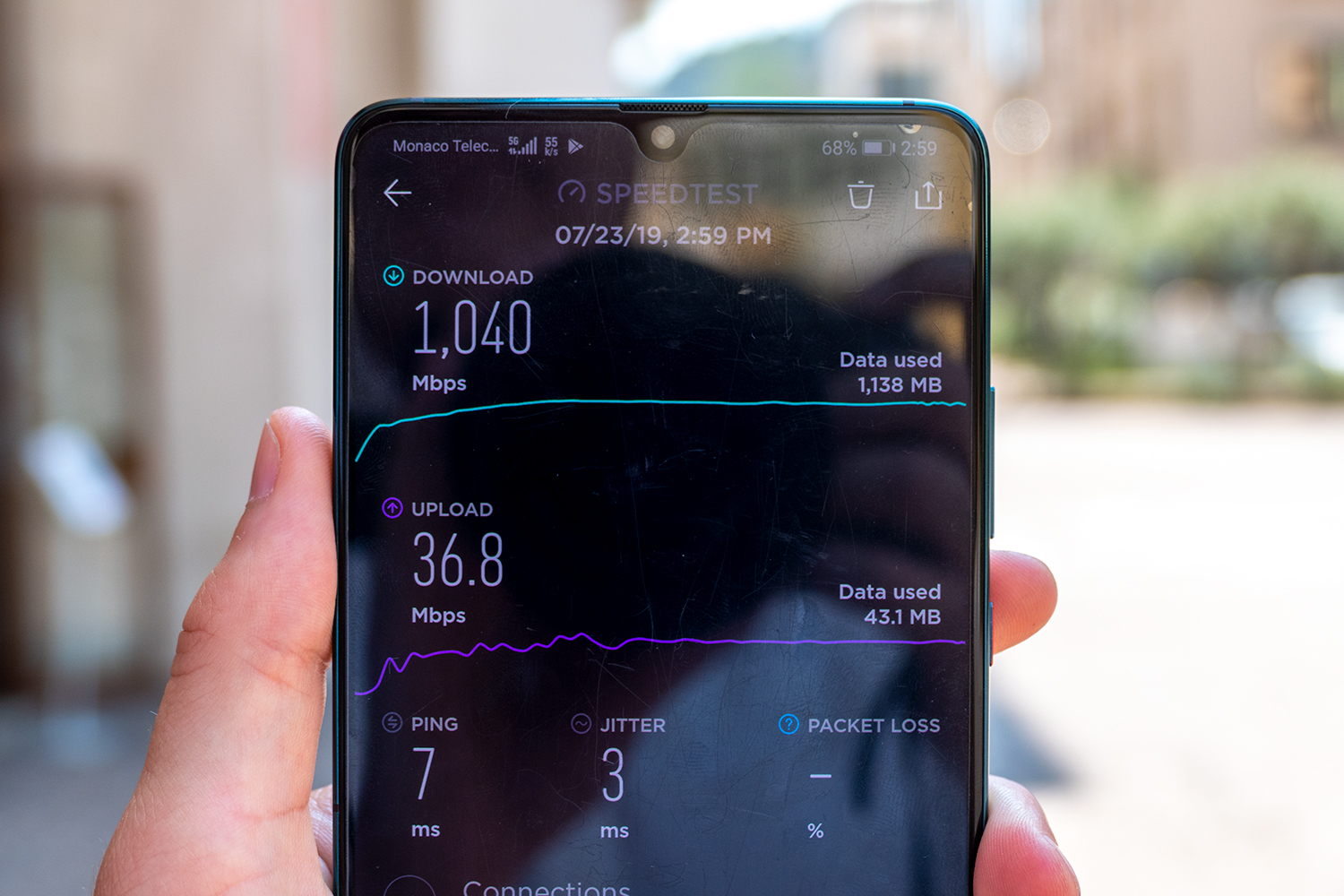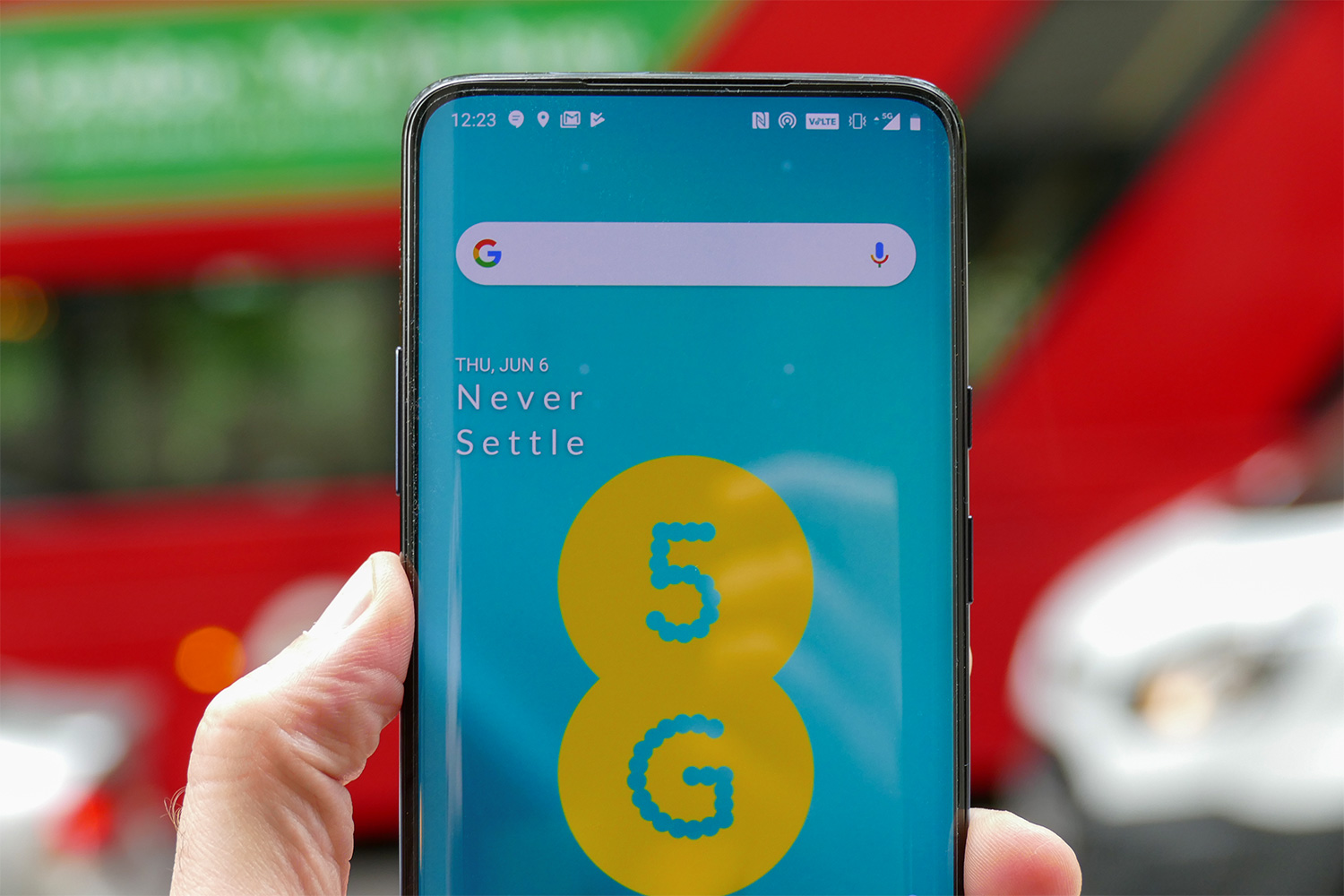In the last few months of 2019, I signed up for a 5G contract, ready to put the new tech to the test in 2020, and be first in line for all the exciting 5G breakthroughs we’ve been promised are coming.
So how has it gone? I’ve now had my 5G contract and phone for 14 months and still don’t have coverage in my local area, which is only about 30 miles outside of central London, so hardly the back of beyond. Not the best start, but worse by far is that I haven’t been given any reason to feel like I’m missing out. In the end, 2020 is another year where 5G has failed to live up to any of the hyped-up promises.
2020 should’ve been a breakout year for 5G, right?
Since 2015, 5G has been talked about in earnest at Mobile World Congress — the mobile industry’s biggest annual trade show — yet there’s still no compelling reason to jump on board, despite the ability (and urging by carriers) to do so. There’s no doubt 2020 has presented its own set of unique challenges that have slowed progress, but given how the groundwork has been laid for at least five years, we should rightfully expect some payoff from 5G by now.

Almost every top phone you can buy today comes with 5G, even the latest Apple iPhone models, and most standard network contracts include 5G data, so it’s not like you can avoid it. This ubiquity gives the dangerous impression it’s a feature worth having. But apart from running a few speed tests to justify your extra monthly cost every time you get a signal, what else can you actually do with it? Let’s see what some of the biggest names in 5G are saying.
Verizon says 5G has vast commercial applications, will benefit edge computing, be great at concerts and sporting events, and help expand the Internet of Things. Qualcomm says basically the same, touting similarly unspecified advancements in mobile apps, video, and “cutting edge user experiences.” Ericsson says exciting new startups are finding new ways to use 5G — without actually naming any. Stop me if you’ve heard this before, as it’s essentially the same amorphous generalizations that have been peddled since before the arrival of the first 5G-ready phones in early 2019.
Carriers and network providers have a lot of lofty goals and theoretical advancements.
Even the simplest, most basic advantage of 5G — the speed and ability to download an episode of The Mandalorian in 0.00034 seconds — isn’t up to standard yet. If you can get a 5G signal on your phone, the speed may not always be faster than a strong 4G signal. A recent test of U.S. 5G networks by PCMag showed that in many cases the 4G connection was faster than 5G. And while Verizon’s mmWave 5G network won the honor of being “fastest,” the coverage was a feeble 4% of the country — and its just-launched “nationwide 5G” network using Sub-6 isn’t the same speed.

My colleague Andrew Martonik, who lives in New York City, is blanketed in T-Mobile 5G (both Sub-6 and mmWave). It’s downright rare to ever see “LTE” in the status bar. Yet again, aside from being able to run speed tests to confirm the faster connection, nothing about his daily routine of messaging, browsing, streaming YouTube, listening to Spotify, or even hot-spotting to his laptop has changed from using 4G.
The subscriber number fallacy
All this is immensely annoying because it’s not new at all. Apparently though, it hasn’t stopped adoption, and there are 228 million 5G subscribers globally, a jump of 66% over the number recorded at summer’s end, according to Omdia’s latest research. It’s a small amount when compared to the 5.82 billion LTE subscribers in the world, but a significant number for a service with very few real-world, everyday benefits over a decent 4G LTE connection.

I also wonder how many of those 228 million are like me: Someone with a 5G-ready phone, a 5G-ready contract, and absolutely no regular connection to a 5G signal. This makes me a “5G subscriber” and a handy statistic to be trotted out as an example of the continued successful adoption of the technology, but not a 5G user. Every person in the U.S. with a recent plan from T-Mobile, AT&T, or Verizon plan is technically a 5G subscriber, but how many are actually making use of it?
A Nikkei report finds that in South Korea, home to nearly 10 million 5G subscribers, more than 560,000 of them have already decided to switch from a 5G contract back to a 4G contract because they were disappointed with the service. I’d do the same if I could, but sadly don’t have the option. I’m sure I’m not the only one. It wouldn’t be forever, and I want to make that clear because I do believe the 5G benefits will eventually come, but for now, 5G is still very firmly in early-adopter territory.
A 5G opportunity wasted
The coronavirus pandemic has undoubtedly made it harder to see and use the early benefits of 5G. People are buying fewer smartphones and people are upgrading less frequently, while large-scale events have been canceled and cities are not as busy as they once were. Plus we’re all spending more time inside connected to Wi-Fi, meaning it’s not the easiest time for a new mobile technology to shine. But there have also been missed opportunities.

Our need for connectivity has not diminished, just refocused, and the commercial potential has arguably only grown. Whether it’s opportunities in digital learning, online health care, virtual reality tourism, augmented reality tours of attractions, or multiscreen sporting events viewed at home — all the things 5G is supposed to revolutionize — 2020 seems tailor-made for showcasing what 5G will be able to do in the future.
Yet, when you search for 5G and the pandemic, you’re not met with press releases and stories about how the tech has improved this horrendous year, but instead, results are filled with conspiracy theories about ridiculous links between 5G technology and COVID-19, the disease caused by the coronavirus. With no actual “killer feature,” 5G has been labeled simply a killer, according to a few demented souls. That’s not a great PR battle to have to fight for your next-generation network rollout, no matter how silly and baseless their claims are.
The potential remains far away
The potential of 5G remains very exciting, but it’s still very much potential rather than reality. And irresponsible marketing hype from chipmakers, carriers, infrastructure providers, and to a slightly lesser extent, device makers, has pushed the tech into the limelight years too early.
It’s immensely frustrating, as most people knew this was the case when 5G hype started in earnest in 2018. But the noise quickly became so commonplace that it was easy to forget the facts haven’t really changed, as proven by the need to write about 5G still being a waste of time for most people as we head into 2021.
The potential of 5G remains very exciting, but also very far away.
There are comparisons to be drawn between 5G and that other massive, hyped-up tech trend: Electric cars. To really get the most from electric car ownership right now, you have to have a charger at home and be deeply committed to working around the platform’s downsides, but that will change over the next decade and the tech will start to make more sense to more people. Right now, 5G is in the same position. There are too many caveats, too many heavily invested companies to put an end to the hype, and years before the infrastructure and true benefits will show.
Would I feel differently if I could walk outside right now and get a 5G signal on my phone? It’s a fair question, and it would at least make me feel like there was a point to owning the hardware and having the right contract. But the fact remains that after I’d run a speed test and posted the result on Twitter, there wouldn’t be anything else to do with it.



